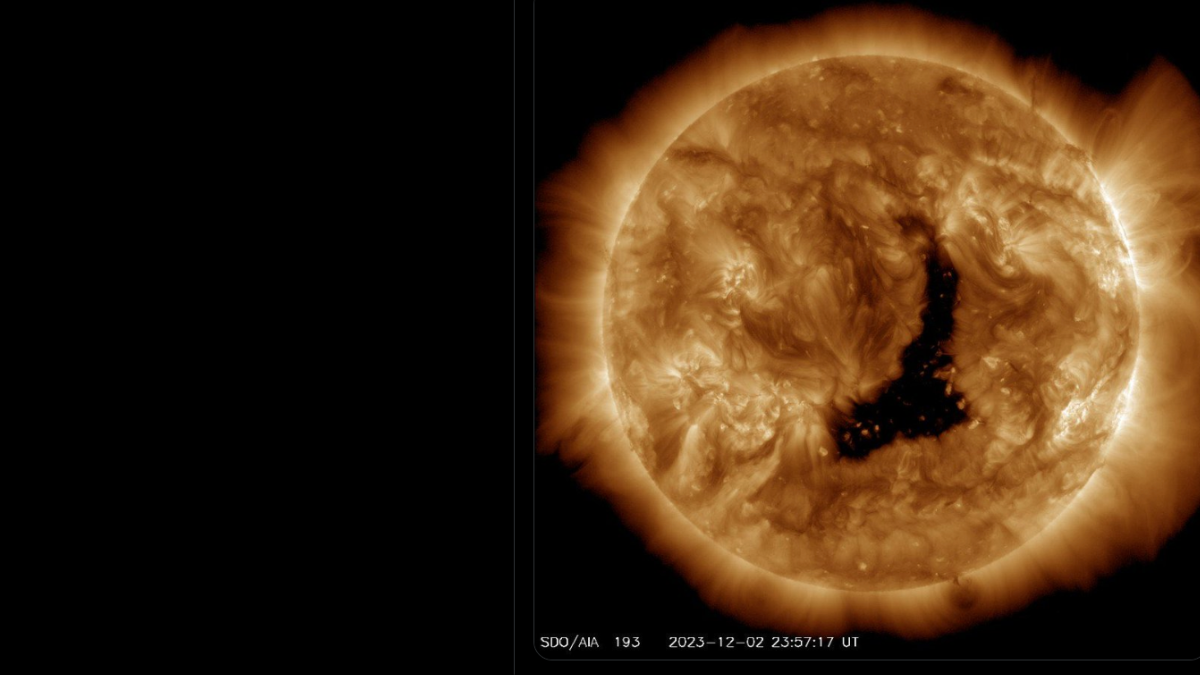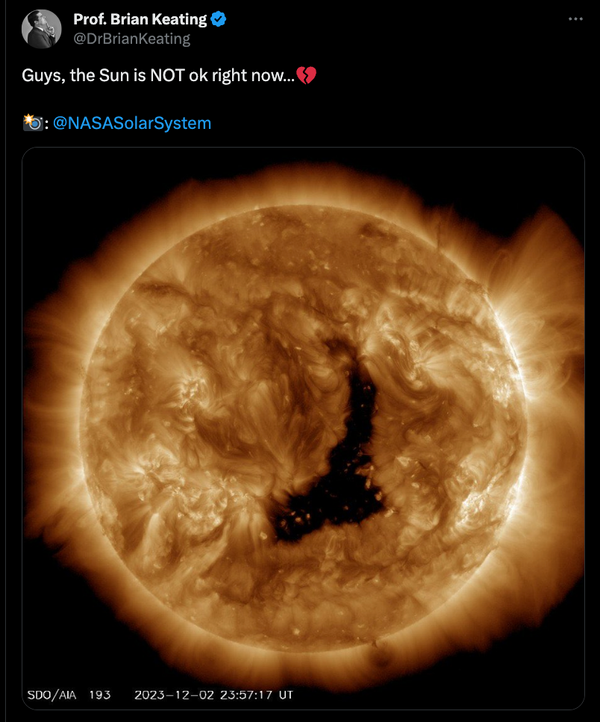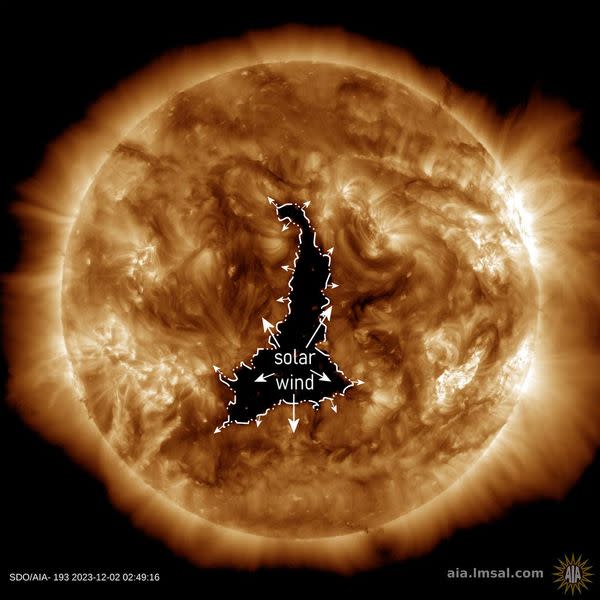Fact Check: Yep, This Is a Real (and Stunning) Image of the Sun

Claim:
An image shared to social media in December 2023 genuinely depicts the sun.
Rating:
Context:
The image is indeed genuine and showed a coronal hole that was photographed on the sun on Dec. 2, 2023. And nothing abnormal is depicted, as one social media post implied.
An image post shared to X on Dec. 3, 2023, that had garnered more than 2 million views as of this publication claims to depict the sun in pretty astonishing form.

(Screengrab/X)
The image above was captured by NASA’s Solar Dynamics Observatory (SDO) on Dec. 2, 2023, through the project’s Atmospheric Imaging Assembly (AIA), which captures an image of the sun every .75 seconds.
Because the image is genuine, we have rated the claim as “True.”
However, the picture does not depict something abnormal, or “NOT ok,” as the above post suggested. Rather, the image showed a coronal hole, a large area of the sun’s corona – the outermost part of the sun’s atmosphere – that is less dense and cooler than its surrounding area, resulting in a dark-colored gap in imaging data.
Coronal holes are normal and can develop at any time and location on the sun, according to NASA. Solar winds near coronal holes can escape more readily into space, which results in relatively high-speed wind streams. Coronal holes do have the potential for escalated geomagnetic activity and possible solar storms, so forecasters analyze and track their activity closely.

(NASA)
Snopes traced the image above using credit information that was visible along the bottom of the picture. It read, “SDO/AIA- 193 2023-12-02 02:49:16.”
SDO is an institution self-described as being “designed to help us understand the Sun’s influence on Earth and Near-Earth space by studying the solar atmosphere on small scales of space and time.” SDO was launched on Feb. 11, 2010.
To find the original publication of the solar image, we searched the SDO data archives using the parameters shown and found a movie version of the image made up of 500 frames, including the one featured above. Those still images have been archived here.
AIA is one of three experiments launched as part of SDO to perform several measurements that characterize how and why the sun varies. Together, the three instruments observe the sun simultaneously, collecting measurements to better characterize the processes of the sun to:
In the first decade of its use, SDO captured over 20 million gigabytes of data. Below is a time-lapse compilation of 10 years' worth of data published by NASA Goddard in 2022 for the 10th anniversary of the SDO deployment:
Sources:
Coronal Holes | NOAA / NWS Space Weather Prediction Center. https://www.swpc.noaa.gov/phenomena/coronal-holes. Accessed 9 Dec. 2023.
“Https://Twitter.Com/DrBrianKeating/Status/1731372205093925042.” X (Formerly Twitter), https://twitter.com/DrBrianKeating/status/1731372205093925042. Accessed 9 Dec. 2023.
SDO | Solar Dynamics Observatory. https://sdo.gsfc.nasa.gov/. Accessed 9 Dec. 2023.
https://sdo.gsfc.nasa.gov/data/aiahmi/. Accessed 9 Dec. 2023.
https://sdo.gsfc.nasa.gov/mission/instruments.php. Accessed 9 Dec. 2023.
https://www.spaceweather.com/archive.php?day=03&month=12&view=1&year=2023. Accessed 9 Dec. 2023.

 Yahoo News
Yahoo News 

